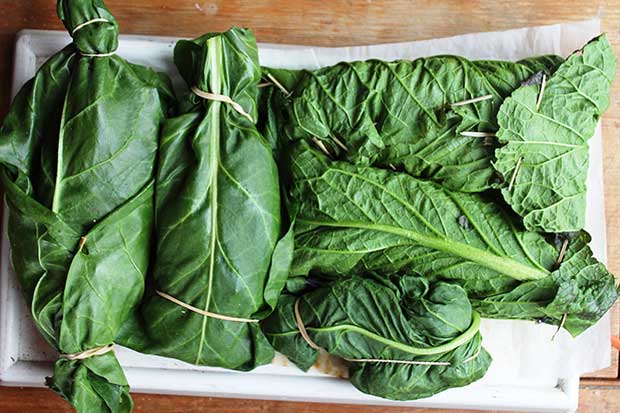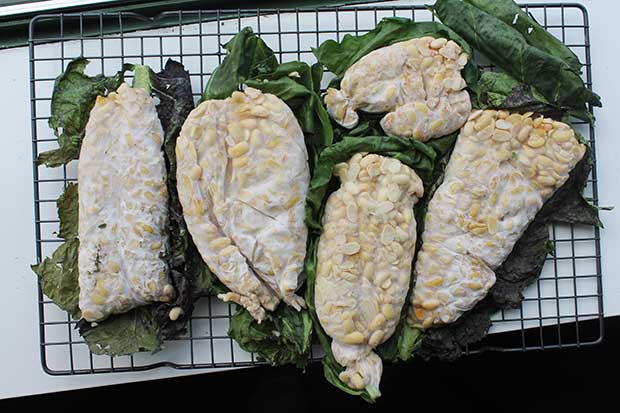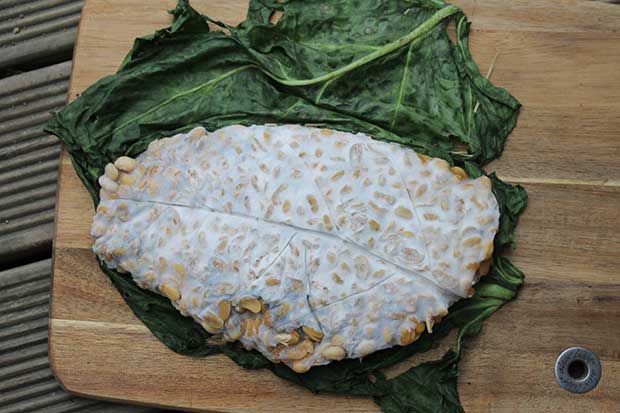How to make tempeh without using plastic

Silverbeet leaves make an ideal wrap.
Once you’ve got the hang of fermenting tempeh in plastic bags, you can move onto the real deal by producing it in leaves, with a Kiwi twist.
Words: Diana Noonan
Tempeh is fermented in banana leaves in Indonesia. Most of us are unlikely to find them easily available, but there are alternatives. I use whatever leaves are seasonally available, including spinach, silverbeet, mustard greens, cabbage leaves and the foliage of yakon.
The secret is to choose the largest leaves possible and those with no holes in them.

Lay the leaves flat and spoon on the inoculated beans.
Compression is important. Wrap the beans as tightly as possible without damaging the leaves. Hold the leaves closed with toothpicks or secure them with rubber bands.
Continue with the fermenting process, taking care to repair any holes that may appear in the leaf wraps (usually when you are handling them).

The tempeh will take on the pattern of the leaves it is wrapped in.
If the leaves begin to look very dry during the fermenting process, splash a little water onto both sides.
Tempeh fermented inside leaves is much creamier than that produced in plastic bags. It is also more beautiful, displaying the outlines of the leaves’ vein patterns on its surface.
READ MORE
How to make tempeh: the high-protein, low-fat food you can ferment yourself
Love this story? Subscribe now!
 This article first appeared in NZ Lifestyle Block Magazine.
This article first appeared in NZ Lifestyle Block Magazine.
